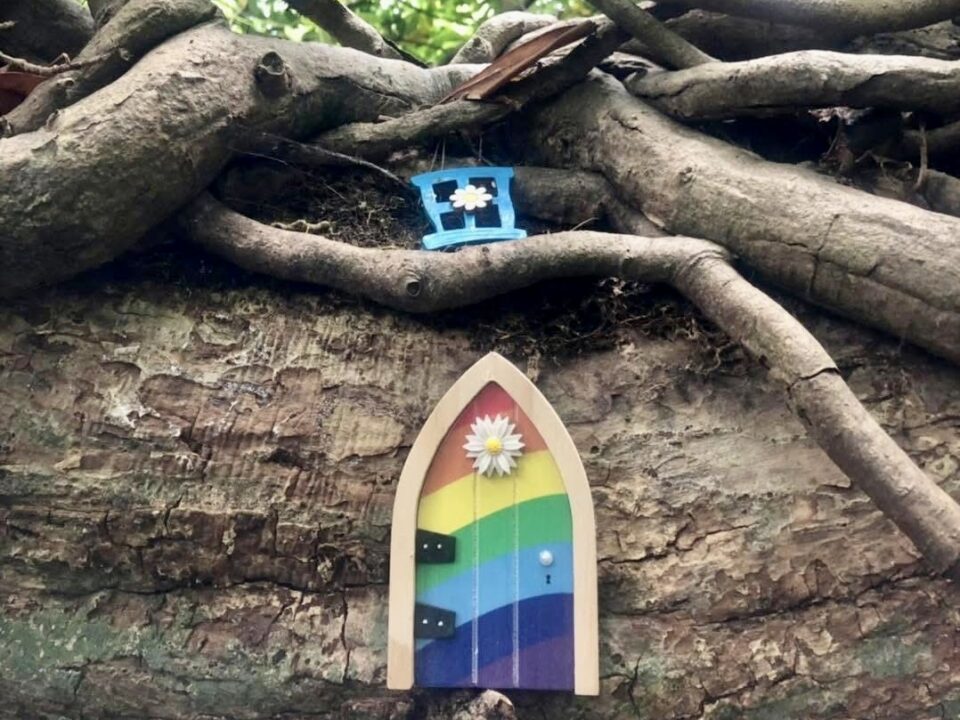On first impression, the Glen of Imaal, a remote and secluded valley overlooked by Lugnaquilla and its many foothills, may seem like a place outside of time, unchanged by human hands. But for those who know where to look, the Glen of Imaal is full of traces of generations past, from their folklore to their fingerprints.
Stories in stone: St Laurence’s Footsteps
Near the townland of Knickeen in the Glen of Imaal, there are local legends of giants and saints immortalised in stone. In a marshy field at the edge of the forest lies a bullaun stone known locally as St Laurence’s Footprint or, alternatively, St Laurence’s Handprint. The stone, which has five hollowed depressions in it – including one that resembles a footprint – is named after St Laurence O’Toole, a twelfth-century Christian saint. St Laurence is a figure more often associated with Glendalough, where he was Abbot, than with the Glen of Imaal, but his family, the Ui Tuathail, came to occupy the Glen of Imaal following the Norman Invasion which likely explains the local association between the saint and ‘his’ stone.
The connection between St Laurence and this stone is all the more curious because there is a possibility that its significance may predate the saint – and indeed Christianity. Bullaun stones, from the Irish bullan meaning ‘bowl’ due to their characteristic hollows, are curiously enigmatic objects. Although bullauns are quite common in Ireland, their original function and antiquity remains a mystery; however, many scholars believe that at least some bullauns are pre-Christian in origin. Indeed, some theories suggest that bullauns had a pagan ritual function prior to their re-appropriation by Christianity, and the widespread folk belief that certain bullauns could either cure or curse someone may be an echo of these older pagan practices.

Stories in stone: The Knickeen long stone
Just a little further down the road stands the Knickeen long stone, another example of local people layering myth atop history. This great granite monolith is most remarkable for the ogham inscription carved along the stone’s north-eastern edge. Ogham is the earliest written form of Irish, which, according to legend, was created by Ogma, the Celtic god of speech, poetry, and eloquence. The Knickeen ogham stone is dated somewhere between 400 and 550 AD, and the inscription reads MAQI NILI, meaning “ of the son of Neill”. It is likely that the stone served as either a territorial marker or as a gravestone for someone of that name, but who Neill or his son really was is no longer known.
But in the years since its creators were forgotten, the people of the Glen of Imaal came to associate the Knickeen long stone with a new figure – not Neill, nor his son, nor Ogma himself, but the mighty Fionn Mac Cumhaill. Local folklore tells that long ago, Fionn Mac Cumhaill (or perhaps some other giant) used to grow oats on this land, and one day when Fionn was out walking, he looked down from the top of Lugnaquilla to find some stray sheep eating his oats. To scare away the sheep, Fionn is said to have hurled a great stone from the mountain to the field where it still stands today. According to this story, the notches carved along the stone’s edge are not ancient letters at all, but rather fingerprints left by the giant’s great grip. The interpretation and reinterpretation of the Knickeen long stone over time has imbued this monument with fascinating layers of meaning its founders could hardly have foreseen. In their stones and in their stories, even the wildest valleys in Wicklow have profoundly human tales to tell.

This post was created in collaboration with HeritageHiking, a citizen heritage project showcasing the unique history and mythology of the Wicklow Mountains. To discover more hidden stories of the Wicklow Mountains, check out @heritage_hiking on Instagram.



